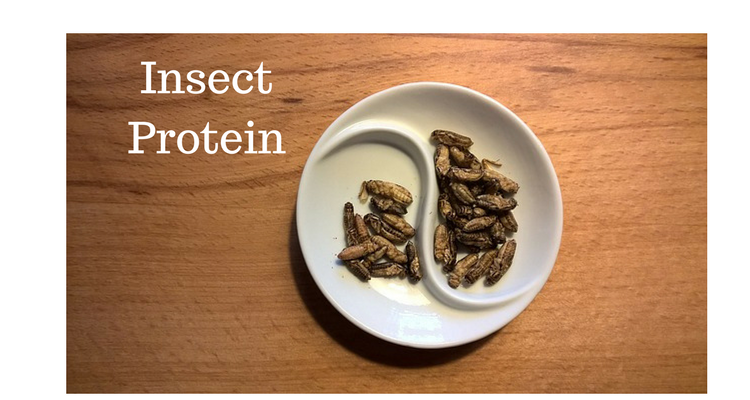Food of the Future

What Will We Be Eating by 2030?
Whenever I think about food in the future, a scene from Back to the Future 2 pops into my mind. While Marty McFly’s mum rehydrated a pizza, that technology never came through. Since that film was released in 1989 there have been a lot of changes. We already know the risks of excess sugar, heavy carbs and hydrogenated fats. The question here is: what will our diet look like in 2030? And what are the trends now which are reshaping how we eat?
Three major factors are already reshaping what we eat. These are population growth, awareness of healthy eating and scientific innovations. Together, these forces are changing our diets. This page covers 6 areas of change, which will have a big influence on what our diets look like by 2030. I will print this article and come back in 12 years to see how accurate my predictions are.
What Is Covered on This Page:
You’ll find 6 areas covered below. Many of them overlap. I’ll add a 7th right here. Awareness of what we eat is steadily increasing – along with the trend of more people taking health and fitness seriously. As time goes on, the population as a whole are taking more responsibility for their food choices – and that can only be a good thing!
Here are the areas covered:
- Artificially Grown Meat
- Seaweed and Algae
- All in One Meals (Think Soylent and similar products)
- Meat from Plants
- Vertical Farming
- Insect Protein
- Advances in GM Technology
Future of Food #1 – Lab Grown Meat
In only a few years, the technology behind lab grown meat has made great leaps. A highly publicised (and overly dry!) lab grown burger was eaten in London in 2016. It is now predicted that lab grown meat will be available to the public by the end of 2018.
The process involves concepts perfected in regenerative medicine. A small sample of cells is taken, then then encouraged to multiply. The challenge is not in growing the cells as much as getting them into a form which has the texture of real meat.
Real meat is expensive to produce in terms of environmental inputs. It takes a lot of grain and water to produce a steak! That is even before considering the ethical issues, and concerns like use of hormones or antibiotics.

Future of Food #2 – Seaweed
Seaweed is already a component of many Asian diets. In the West we eat this as Sushi wrappings, though rarely in salads or as fibre-rich fillers of other meals. That will change, with an increased awareness of the nutritional value of seaweed. One type, Purple Laver, has a high concentration of vitamin B12. This is used by Vegans to top up, since their regular diet lacks this.
There are two broad strains of edible seaweed. These are green algae, and red algae. Several varieties are dried, powdered and used as a filler in soups or stews. One type, Sea Grapes, is eaten with vinegar as a tasty side-salad.
More recently, seaweed is being made into a pasta substitute. Having eaten this one myself, I was impressed. It is better than lentil, chick-pea or corn-flour based pastas. The main thing that took a little getting used to it that the end product is jet black!
Future Food #3 – All-In-One Meal Drinks
Soylent has been around for more than 5 years already. This all-in-one meal promises to be all you need to consume for a balanced diet. It looks like a grey drink and comes in bags. I’m personally sceptical on this one (though have not personally tried it). Nutrition is such a complex area, and there are so many unknowns – even when it comes to well-known foods.
Technology marches forward, with several other brands of complete meal replacement foods now available. Examples include Shakeology and Vega One.
I’ll predict this: Meal replacements will grow significantly in the coming years. Instead of being the only food the users of these drinks consume, they will find a place as replacements for individual meals.
Future of Food #4 – Meat from Plants
A vegetable which tastes like bacon, with a great texture sounds like something from sci-fi. This already exists and is already being sold to the public. The ‘Impossible Burger’ sears and bleeds – this the big innovation is a meatless burger – which has rave reviews.
Artificial meat takes many forms, Tofu is the best known, and is a staple of many Asian diets. The quest for a replacement for meat continues, and we will see more innovation in this area. My view is that replacing the texture and flavour of meat is only half the battle. This needs to be significantly better value (or most people will choose the real thing). There also needs to be a way of boosting protein for users of these plants. Whey protein will start to see wider use in this role, outside of its usual function for diets and muscle building.
Future of Food #5 – Vertical Farming
This entry is a little different. Rather than a specific food, a way of farming will mean more fresh produce that you can source locally. Vertical farming is perfect for urban spaces. This involves growing crops in layers of soil on top of each other. They are irrigated and positioned to maximize sunlight.
Growing vegetables inside cities will shape the future of food in two ways. For me, the most significant factor is removing the need to transport crops over long distances. Instead of the complex supply chains in place today, we will be able to get fresh fruits and vegetables from close to the source. This might even bring down prices as competition increases. What is not to like about healthy fresh food, produced locally, at a great price!
Future of Food #5 – Insect Protein
I ate some dried crickets and mealworms the other day. They tasted like a bag of crisps, only without all that salt and artificial flavours associated with those snacks. Again, Asia leads the way, having eaten roasted grasshoppers and other bugs happily for generations.
You can now buy flour made from Crickets. This is a huge breakthrough, and if it does scale could provide a way of feeding millions. The propensity of insects to reproduce fast (given the right conditions), make this technology easy to scale. All that remains is for many of us to get over our inhibitions and enjoy the protein and nutrient rich creepy-crawleys!

Future of Food #7 – Advances in GM Technology
I’ll tread carefully for this last section, as there is still a lively debate about Genetically Modified foods. On a practical level, this involves selective breeding and altering the DNA of plants (and sometimes animals) to provide disease resistance and increased yield. GM crops are banned in some countries, while others (including the US) have been growing them for years.
Innovations here include producing crops which can grow in marginal conditions. For example, plants have been modified to thrive in ground with a high salt content. Understanding of genes is growing fast. Powerful computers reduce the need to manual trial and error. There is every chance that plants can be adapted to grow (and yield more) in conditions we considered impossible.
Wrapping Up: The Future of Food
Taking personal responsibility for your outcomes, in terms of fitness, health and life in general, is on the rise. As we become aware of the options available to us, and the risks of ‘junk’ type food, we can all improve our healthy lifespans.
The best thing about the future of food is that the pace of change is increasing.
Who knows, the best innovations in this area we are enjoying by 2030 could be something none of us have yet conceived!
More Popular Pages in the Fitness Review Food Section:
- Fitness and Clean Eating
- Alternatives to White Sugar
- Best Fitness Equipment for Burning Fat
- Are Bananas an Effective Pre-Workout Meal?


